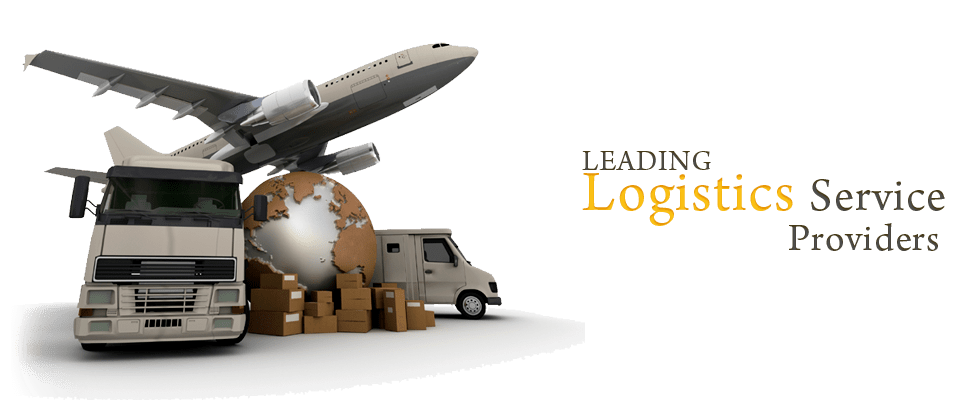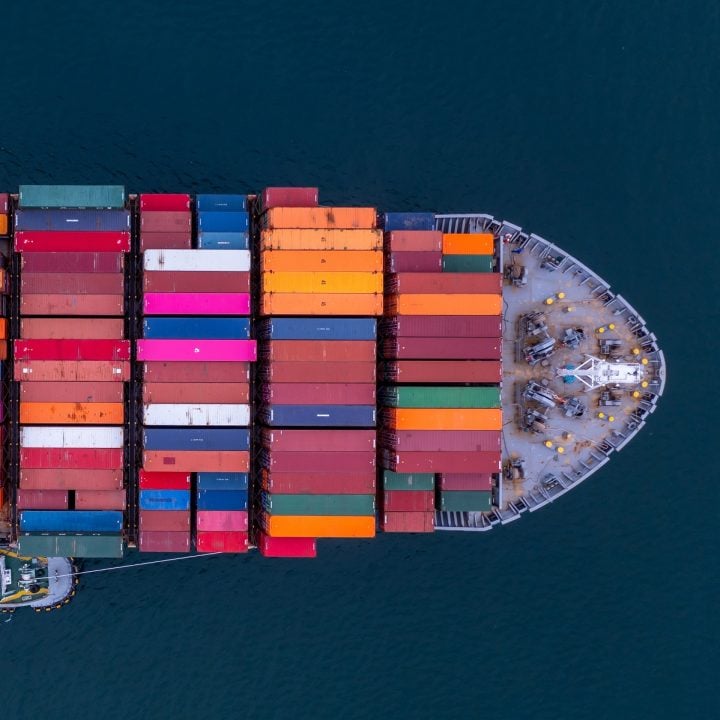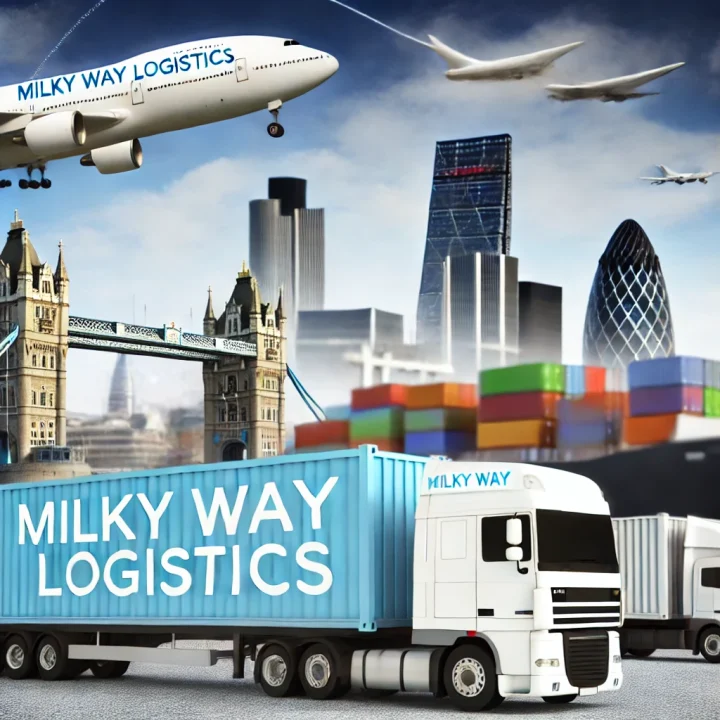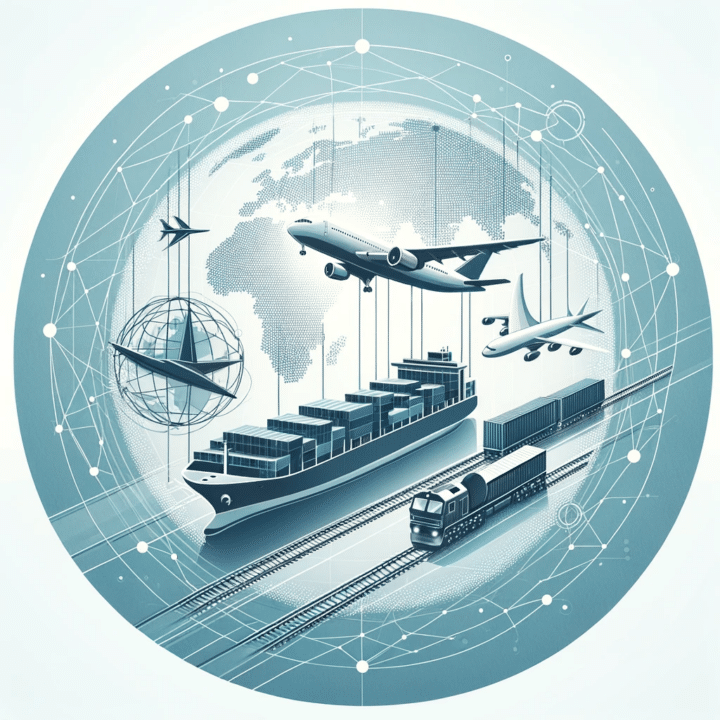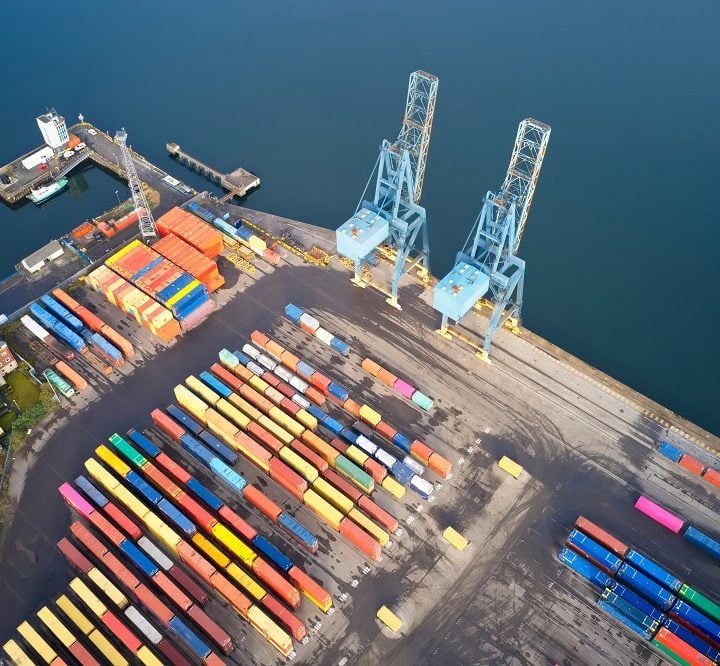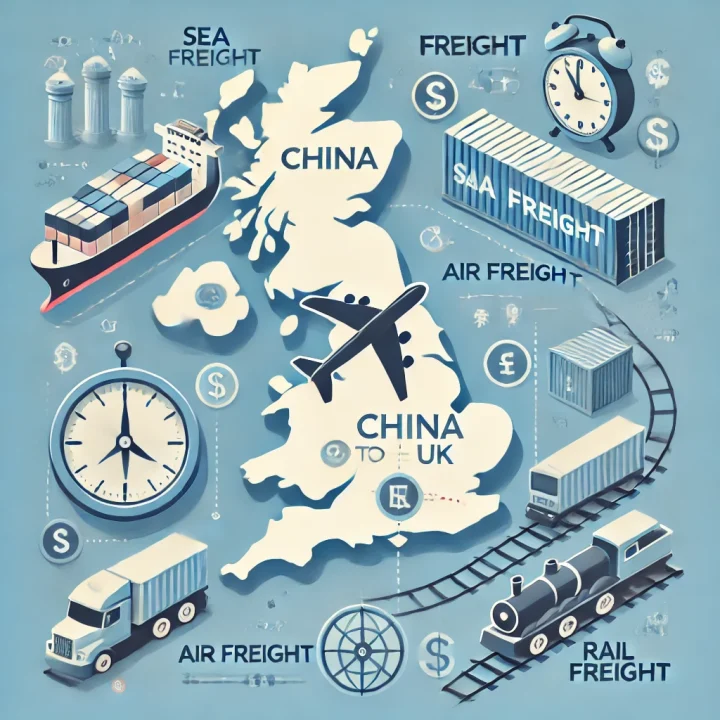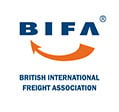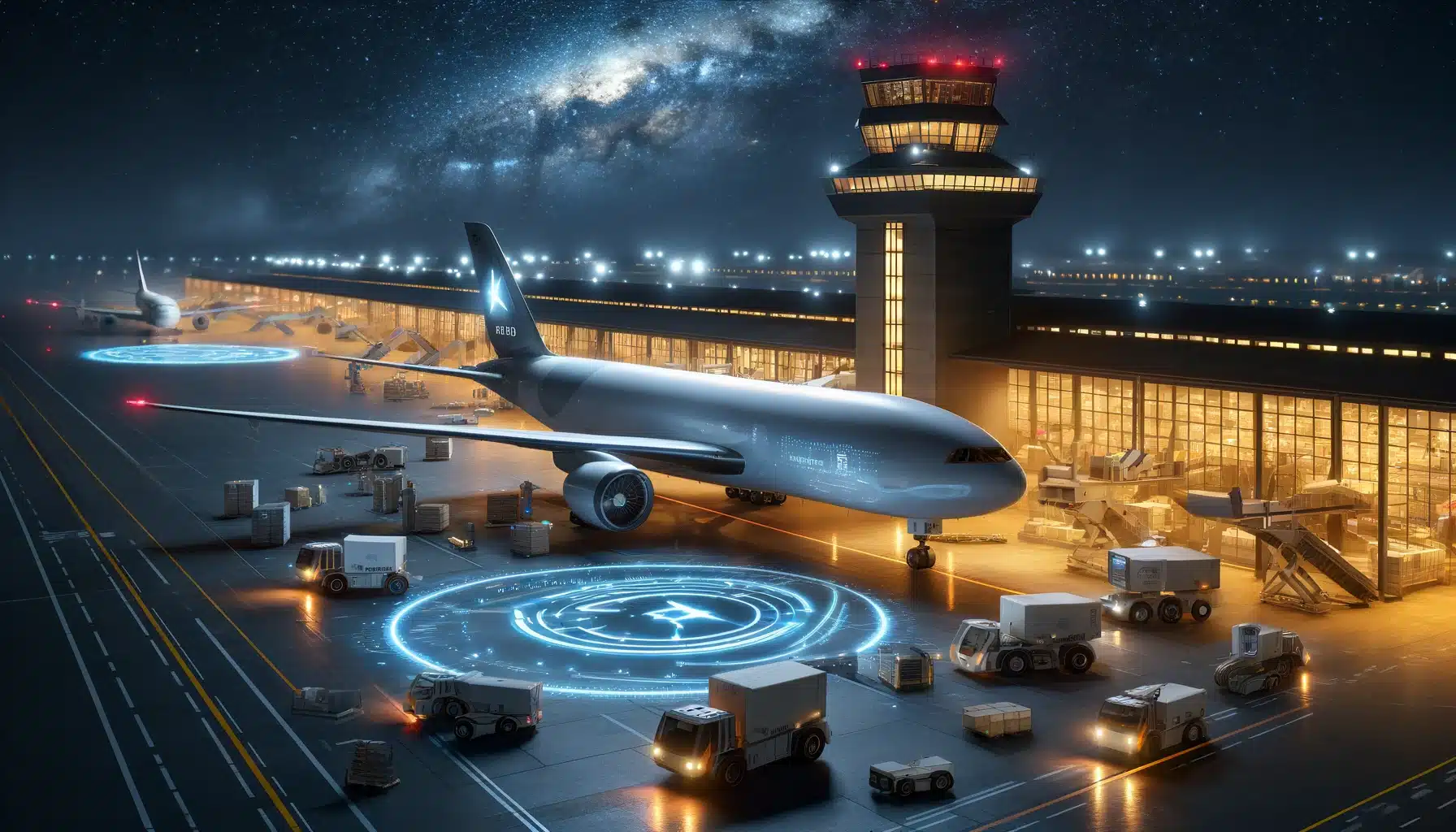
Airfreight Cargo 2024 by Milkyway Logistics AI
Airfreight cargo,
The transportation of goods via aircraft, is a pivotal element in global logistics and supply chain management. Esteemed for its rapid transit times, it serves as the leading choice for conveying time-sensitive, perishable, or high-value items across both domestic and international routes. This transport method stands out for its ability to swiftly connect distant locations, ensuring that products arrive promptly, which is especially crucial in today’s fast-paced market dynamics.
Milky Way Logistics, nestled in the heart of the City of London, represents a key role in airfreight cargo in the scope of global logistics and supply chain management. As a freight forwarding company renowned for its exceptional airfreight cargo services throughout the UK, it harnesses the power of air transport to deliver unparalleled speed and reliability. This is vital for transporting time-sensitive, perishable, or high-value items, where the instant connection between outlying spots can be the difference between success and failure in today’s rapidly evolving market landscape.
With airfreight cargo, Milky Way Logistics manages a complex, meticulously orchestrated process. From the initial packing and labeling—complying with strict regulations for all cargo, including hazardous materials—to the preparation of critical documentation such as air waybills (AWBs), commercial invoices, and customs declarations, the company ensures each step promotes legal compliance and efficient transit. These documents serve not only as a legal framework but also as a bond of trust between Milky Way Logistics, its clients, and the carriers.
The company’s expertise extends to the careful handling and loading of cargo at airports, overseen by seasoned professionals who guarantee that goods are securely stowed for their aerial journey. Upon arrival, Milky Way Logistics adeptly navigates the varying complexities of customs clearance in different countries, ensuring a smooth transition from air to land delivery.
Despite its higher costs relative to other shipping methods like sea freight, airfreight’s unparalleled speed and extensive reach render it indispensable for specific shipping needs, striking a balance between expense and efficiency in modern commerce.
The process of airfreight cargo involves several steps, including:
1. Booking and Planning
Shippers (companies or individuals wanting to send goods) book space on an aircraft through an airline or more commonly through a freight forwarder. Freight forwarders are agents who specialize in logistics and shipping; they aggregate shipments from various shippers to optimize costs and routing.
The booking includes details about the cargo’s weight, dimensions, type, destination, and any special handling requirements (e.g., for perishable or hazardous materials).
2. Packing and Documentation
Goods must be properly packed to withstand air transport, including pressure changes and handling. Packing standards can vary based on the cargo type.
Necessary documentation is prepared, including the Air Waybill (AWB), which is the contract of carriage and includes shipment details, consignee information, and customs declarations. Other documents might include commercial invoices, packing lists, and special permits for restricted items.
3. Collection and Consolidation
Cargo is collected from the shipper’s location and transported to the freight forwarder’s warehouse.
Freight forwarders may consolidate multiple shipments into one unit (e.g., onto pallets or into containers) to optimize space and costs. This process is known as consolidation.
4. Security Screening and Customs
Before being loaded onto the aircraft, cargo undergoes security screening to comply with international regulations. Screening methods can include X-rays, physical inspections, and canine inspections.
Cargo might also undergo preliminary customs checks or documentation review to ensure compliance with export and import regulations. Customs clearance is a critical component of the airfreight cargo process for both import and export, acting as the gateway through which goods enter or exit a country. This procedure involves the submission of various documents and compliance with regulatory requirements to ensure that imported or exported items meet all legal standards of the destination country. Here’s a closer look at how customs clearance for airfreight cargo operates:
On Imports:
– Pre-arrival Preparations: Before the cargo arrives at its destination, the freight forwarder or the shipper must ensure that all necessary documentation is prepared and submitted. This includes the air waybill (AWB), which is the main document used in airfreight, commercial invoices, packing lists, and any specific certificates required for certain types of goods, such as health certificates for food items or CITES certificates for endangered species.
– Arrival and Declaration: Upon the cargo’s arrival, the documents are reviewed by customs authorities to declare the goods. This process involves assessing the cargo based on the information provided, such as the nature of the goods, their value, and their origin. This step is crucial for determining the duties and taxes applicable to the shipment.
– Inspection and Verification: Customs officials may select shipments for inspection to verify the accuracy of the documents submitted and ensure the cargo complies with local laws and regulations. This might involve physical inspection of the goods or a more detailed examination of the paperwork. Inspections can be random or targeted based on risk assessments.
– Duties and Taxes: After the goods are declared and inspected, any applicable duties and taxes must be calculated and paid. The amount is determined based on the value of the goods and their classification according to the harmonized system (HS) code. Some items might be exempt from duties or eligible for reduced rates under certain trade agreements.
– Release and Delivery: Once all duties and taxes have been paid and the cargo has cleared customs, it is released for delivery to the consignee. At this point, the goods can be collected by the recipient or delivered by a logistics provider to the final destination.
On Exports:
Airfreight Cargo by Milkyway Logistics
Custom formalities for airfreight cargo includes:
– Declaration to Customs: Once the documentation is prepared, the export declaration must be filed with the customs authorities of the originating country. This declaration provides customs with details about the goods being exported, their destination, and the parties involved in the shipment. In many jurisdictions, this process is now completed electronically through customs management systems.
– Inspection and Verification : Customs authorities may select shipments for inspection to ensure that the goods match the details provided in the documentation and comply with export regulations. This might involve physical checks of the cargo or a review of the accompanying paperwork. Inspections are generally aimed at preventing illegal exports, verifying the accuracy of declared values for taxation purposes, and ensuring that any restrictions or embargoes are observed.
– Payment of Fees and Duties: Although export duties are less common than import tariffs, some countries impose taxes or fees on certain exported goods. If applicable, these must be paid before the goods are cleared for export. Additionally, fees for processing the export documentation or for cargo inspection may also be required.
– Clearance and Loading: After all necessary inspections are completed and any applicable fees or duties are paid, customs authorities will issue a clearance for the goods to be exported. The cargo can then be loaded onto the aircraft. The freight forwarder or logistics provider typically coordinates this process, ensuring that the cargo is securely and efficiently loaded in accordance with airline regulations and safety standards.
5. Loading and Transport
Cargo is transported to the airport and loaded onto the aircraft. Loading might be done manually or with specialized equipment, depending on the cargo size and the aircraft type.
The aircraft then transports the cargo to its destination airport. Flights might be direct or may involve transshipment through intermediary hubs, depending on the routing.
6. Arrival and Customs Clearance
Upon arrival, cargo is unloaded and presented to customs authorities for clearance. This involves inspecting documentation and possibly the cargo itself to ensure compliance with local laws and regulations.
Customs duties and taxes may be assessed based on the cargo’s value, type, and destination country.

7. Delivery
After clearing customs, cargo is released for delivery. The freight forwarder or a local courier service typically handles the final delivery to the consignee’s address.
In some cases, the consignee might opt to collect the cargo directly from the airport.
Throughout these steps, tracking systems allow shippers and consignees to monitor their shipment’s status in real-time, from collection to delivery. This complex process is managed through coordination between many partners, leveraging technology and expertise to ensure cargo reaches its destination safely and efficiently.
While airfreight cargo may command a premium over other modes of transport, such as sea freight, the value it provides—especially in terms of speed and the ability to reach remote locations—cannot be overstated. For Milky Way Logistics and its diverse clientele, airfreight is not just a service but a strategic choice that balances cost against the efficiency and dynamism required in modern commerce.
#AirfreightCargo #Airfreight #Cargo
